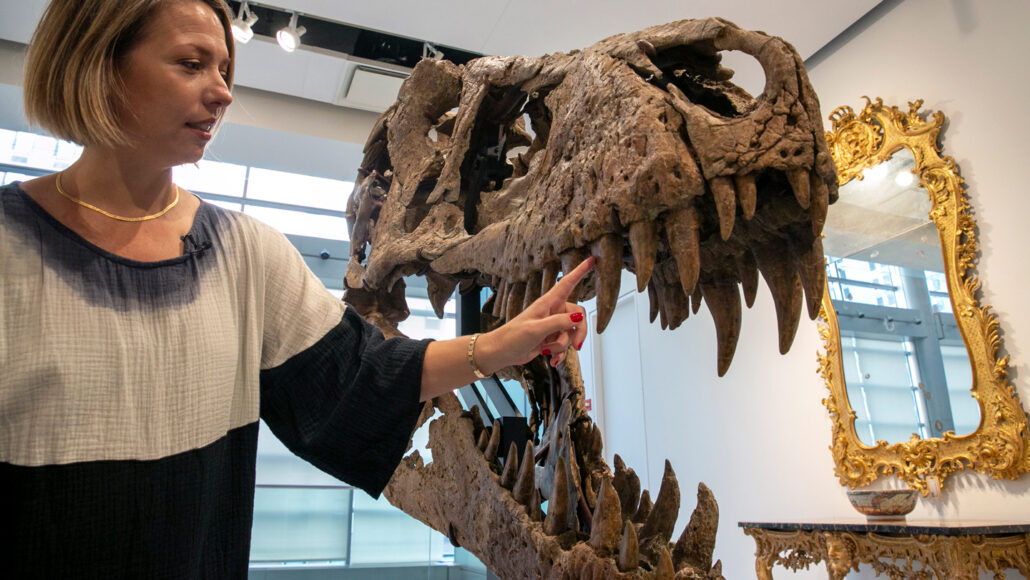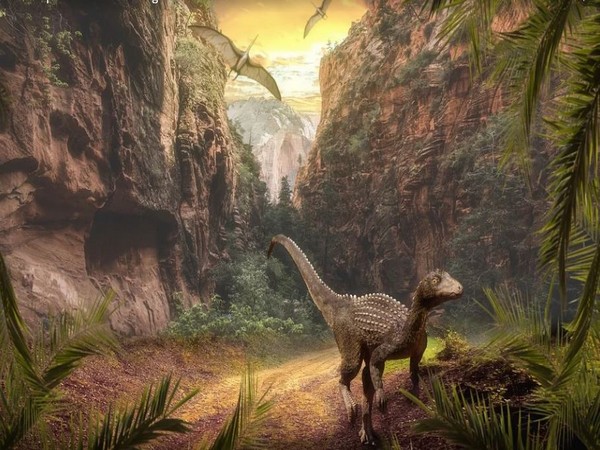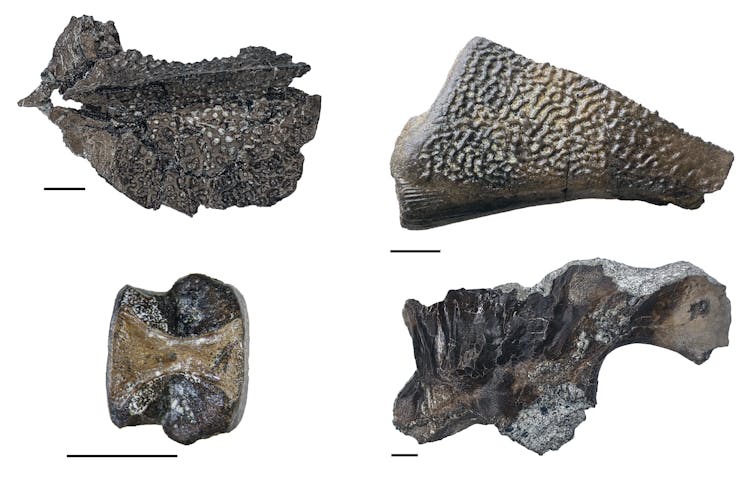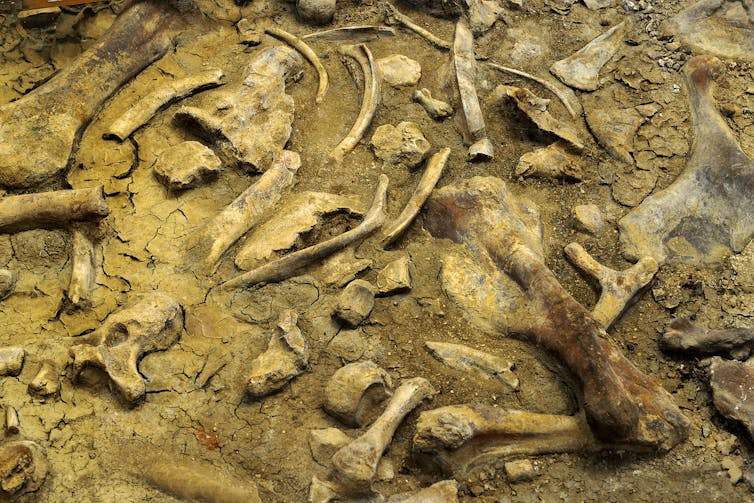Alberta has been ground zero for dinosaur discoveries in Canada since the 1880s, when several Geological Survey of Canada expeditions collected dinosaur bones from the southern part of the province.

The most significant specimens tended to come from the badlands along the Red Deer River, including the highly productive ones in what is now aptly called Dinosaur Provincial Park.
Exciting finds continue to be made in those badlands every year, but northern Alberta has been much less extensively explored from a palaeontological perspective. However, a Late Cretaceous period geological unit called the Wapiti Formation has emerged in recent decades as an important source of dinosaurs and other fossils.
Discovering vertebrates

Last year, I coauthored a study, led by Federico Fanti of the University of Bologna, of the vertebrates from the fossil-rich middle part of the Wapiti Formation, called Wapiti Unit 3.
Unfortunately, the Grande Prairie area, where the palaeontologically richest known exposures of the Wapiti Formation are located, isn’t the easiest place to go looking for fossils. In the dry southern badlands, the sparseness of the vegetation leaves extensive areas of bare, weathered rock that can be searched for specimens relatively quickly and easily. Grande Prairie, on the other hand, is in a heavily forested part of Alberta, where rock exposure is mostly limited to the banks of waterways.
Sometimes we use boats, but fossil hunting in the Wapiti Formation often entails trudging along the riverbeds, searching small, steep patches of exposed rock — what geologists call “outcrop” — for precious bones and teeth.
 Fossils from the DC Bonebed, including a bony plate from a sturgeon (top left), a shell fragment from a soft-shelled turtle (top right), a vertebra from Champsosaurus (bottom left) and a hip bone from a caenagnathid dinosaur (bottom right). (Robin L. Sissons), Author providedDinosaur evolution
Fossils from the DC Bonebed, including a bony plate from a sturgeon (top left), a shell fragment from a soft-shelled turtle (top right), a vertebra from Champsosaurus (bottom left) and a hip bone from a caenagnathid dinosaur (bottom right). (Robin L. Sissons), Author providedDinosaur evolution
My collaborators and I see two compelling reasons to pursue our Wapiti fieldwork. First, Grande Prairie is about 4.5 degrees north of Dinosaur Provincial Park now, and in the Late Cretaceous the difference in latitude would have been similar.
It’s possible that during the Late Cretaceous, the Grande Prairie area was home to a northern ecological community that differed in composition from those present in other parts of southern Alberta.
Second, the Wapiti Formation may provide information about dinosaur evolution during a short but interesting interval of geological time. During the Cretaceous, sea levels were so high that ocean waters spilled into the central part of the North American continent, creating the Western Interior Seaway that divided the western land mass of Laramidia from the eastern land mass of Appalachia. What is now Alberta was more or less on the east coast of Laramidia.
The Bearpaw Gap
There was a period of some 1.2 million years when sea levels were so high that much of southern Alberta was covered by the Western Interior Seaway, resulting in the deposition of marine rocks known as the Bearpaw Formation. This interval of marine sedimentation — the Bearpaw Gap — separates the geologically older Dinosaur Park Formation from the geologically younger Horseshoe Canyon Formation.
The Dinosaur Park and Horseshoe Canyon Formations contain rather different faunas of dinosaurs and other terrestrial vertebrates. There must have been an abrupt or gradual transition from a Dinosaur Park-style ecological community to a Horseshoe Canyon-style one.
But exactly how and when this transition took place is unclear, because the Bearpaw Gap obscures patterns of changes on land during the critical interval.
 Bones of prehistoric animals of the Dinosaur Provincial Park, Alta. (Shutterstock)Critical evidence
Bones of prehistoric animals of the Dinosaur Provincial Park, Alta. (Shutterstock)Critical evidence
What is now the Grande Prairie area, however, remained high and dry. This means that the Wapiti Formation preserves an unbroken record of terrestrial vertebrate life from the entire time period represented by the Dinosaur Park, Bearpaw and Horseshoe Canyon Formations.
Better yet, Wapiti Unit 3 falls within the time range of the Bearpaw Gap, and can therefore shed light on the nature of the transition from the Dinosaur Park fauna to the Horseshoe Canyon fauna.
The most important evidence comes from a Wapiti Unit 3 locality called the DC Bonebed, which contains a diverse sample of small to medium-sized vertebrate bones and teeth.
The DC Bonebed sample bears some important resemblances to the vertebrate fauna from the Dinosaur Park Formation, including the presence of the turtle Plesiobaena antiqua. Other species from the Dinosaur Park Formation that have close, though not necessarily identical, counterparts from the DC Bonebed include the dinosaur Chirostenotes pergracilis (a strange, toothless relative of birds) and the marsupial mammal Eodelphis browni.
The sample from the DC Bonebed is also like the fauna from the Dinosaur Park Formation, but unlike the fauna from the Horseshoe Canyon Formation, in the mixture of turtles that is present and the occurrence of crocodilians.
Different fossil records
The Wapiti Unit 3 assemblage is not exactly identical to its counterpart from the Dinosaur Park Formation. Sturgeons are unusually abundant in the DC Bonebed, as is a crocodilian-like Cretaceous reptile called Champsosaurus, whereas amphibians and true crocodilians are surprisingly rare.
The DC Bonebed and other Wapiti Unit 3 localities provide strong evidence that a broadly Dinosaur Park-like ecosystem existed in Alberta during the Bearpaw Gap, and was then rapidly replaced by the Horseshoe Canyon ecosystem when sea levels fell.
90,000 experts have written for The Conversation. Because our only agenda is to rebuild trust and serve the public by making knowledge available to everyone rather than a select few. Now, you can receive a curated list of articles in your inbox twice a week. Give it a go?
source:theconversation







